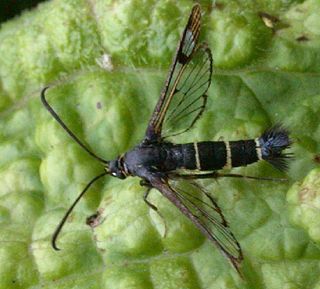
The Sesiidae or clearwing moths are a diurnal moth family in the order Lepidoptera known for their Batesian mimicry in both appearance and behaviour of various Hymenoptera.

Actias is a genus of Saturniid moths, which contains the Asian-American moon moths. Long tails on their hindwings are among their distinctive traits. Other moths with similar appearance are Copiopteryx, Argema and Eudaemonia.
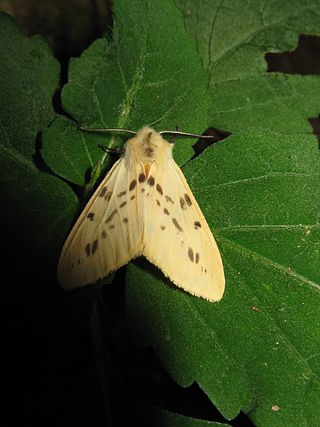
Lemyra is a genus of tiger moths in the family Erebidae. The genus contains many species from East and South Asia, Sundaland and Australia. It was described by Francis Walker in 1856.

Cidariplura is a genus of moths of the family Erebidae. The genus was erected by Arthur Gardiner Butler in 1879.

Paracolax is a genus of litter moths of the family Erebidae. The genus was erected by Jacob Hübner in 1825.

Laelia is a genus of tussock moths in the family Erebidae. The genus was described by Stephens in 1828. Species are well distributed throughout Europe, Japan, China, India, Sri Lanka, Myanmar and Java.
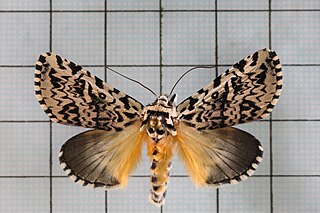
Trichosea champa is a moth of the family Noctuidae first described by Frederic Moore in 1879. It is found in the Himalayas, north-east India, Sri Lanka, China, Taiwan, Japan, and Russia.

Apocleora rimosa is a moth of the family Geometridae first described by Arthur Gardiner Butler in 1879. It is found in Japan.

Lymantria mathura, the rosy gypsy moth, is a species of moth of the family Erebidae found in the Russian Far East, Nepal, Japan, the Korean Peninsula, northern India and China. The species was first described by Frederic Moore in 1866.
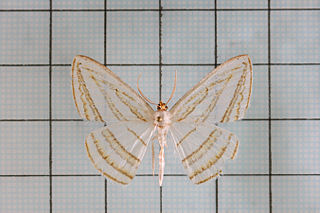
Orthocabera sericea is a species of moth of the family Geometridae first described by Arthur Gardiner Butler in 1879. It is found from the Himalayas to Taiwan and Japan.

Tyspanodes striata is a species of moth of the family Crambidae described by Arthur Gardiner Butler in 1879. It is found in China, Taiwan and Japan.
Scopula emissaria is a moth of the family Geometridae. It was described by Francis Walker in 1861. It is found in India, Sri Lanka, Myanmar, Vietnam, China, Korea, Japan, the Philippines, Sumatra, Java, Wallacea and Australia.
Scopula impersonata is a moth of the family Geometridae. It is found in China, the Russian Far East, Taiwan and Japan.
Venusia phasma is a moth in the family Geometridae first described by Arthur Gardiner Butler in 1879. It is found in Japan.

Diduga flavicostata is a moth of the family Erebidae first described by Snellen in 1879. It is found on Java, as well as in Australia, India, Sri Lanka, Myanmar, Malaysia, China and Japan.

Tochara creberrima is a species of moth of the family Erebidae first described by Francis Walker in 1858.
Schiffermuelleria imogena is a moth in the family Oecophoridae first described by Arthur Gardiner Butler in 1879. It is found in Japan.

Luma sericea is a moth in the family Crambidae. It was described by Arthur Gardiner Butler in 1879. It is found in Japan, Taiwan, China, India (Assam) and Burma.
Mecyna gracilis is a moth in the family Crambidae. It was described by Arthur Gardiner Butler in 1879. It is found in the Russian Far East, Japan, Taiwan and China.
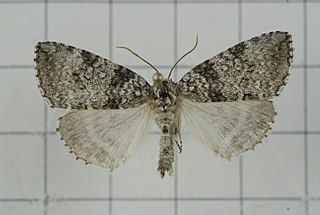
Parapsestis argenteopicta is a moth in the family Drepanidae. It was described by Oberthür in 1879. It is found in the Russian Far East, Korea, Japan, Taiwan, western, north-eastern, northern and central China and Nepal. The habitat consists of various types of mixed forests and oak woods.














